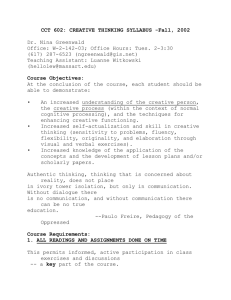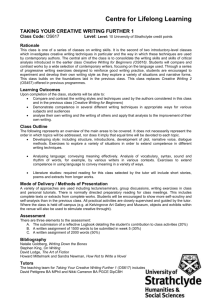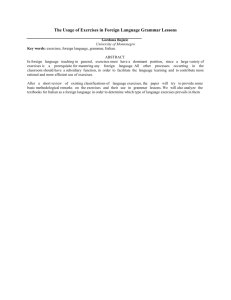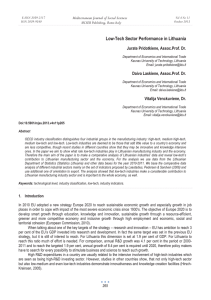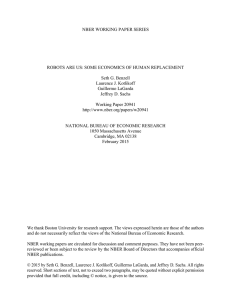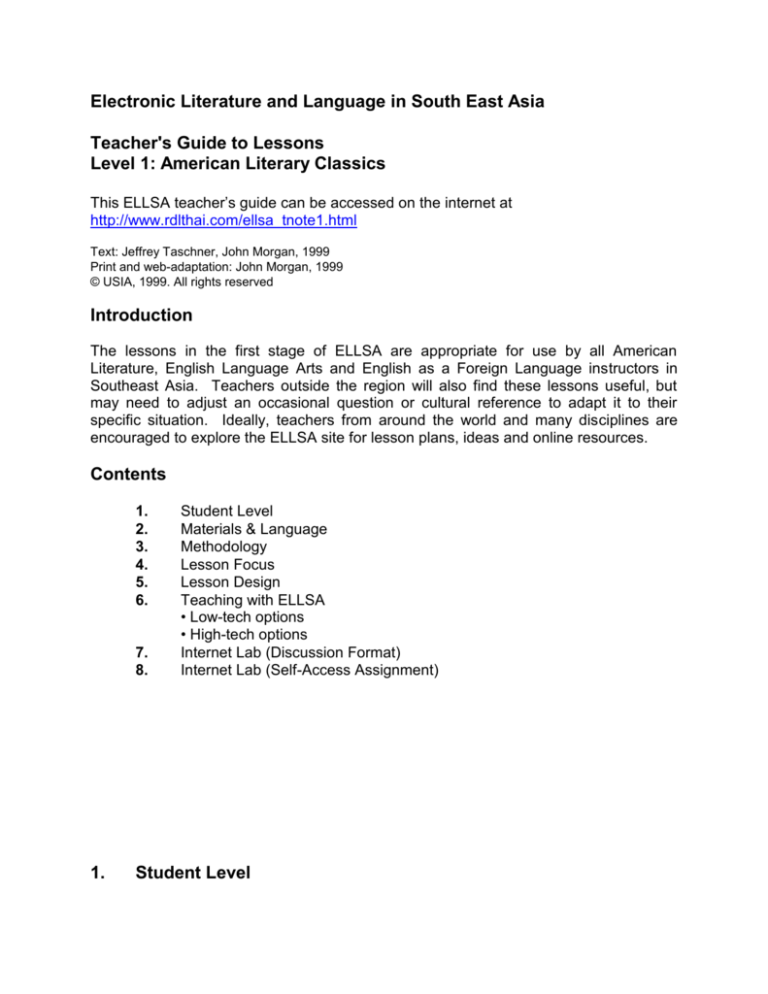
Electronic Literature and Language in South East Asia
Teacher's Guide to Lessons
Level 1: American Literary Classics
This ELLSA teacher’s guide can be accessed on the internet at
http://www.rdlthai.com/ellsa_tnote1.html
Text: Jeffrey Taschner, John Morgan, 1999
Print and web-adaptation: John Morgan, 1999
© USIA, 1999. All rights reserved
Introduction
The lessons in the first stage of ELLSA are appropriate for use by all American
Literature, English Language Arts and English as a Foreign Language instructors in
Southeast Asia. Teachers outside the region will also find these lessons useful, but
may need to adjust an occasional question or cultural reference to adapt it to their
specific situation. Ideally, teachers from around the world and many disciplines are
encouraged to explore the ELLSA site for lesson plans, ideas and online resources.
Contents
1.
2.
3.
4.
5.
6.
7.
8.
1.
Student Level
Materials & Language
Methodology
Lesson Focus
Lesson Design
Teaching with ELLSA
• Low-tech options
• High-tech options
Internet Lab (Discussion Format)
Internet Lab (Self-Access Assignment)
Student Level
Students for whom the American Literary Classics lessons will be appropriate should
have a low to high-intermediate proficiency in English. This will apply to a wide range of
first or second-year university classrooms in Indonesia, Thailand, Malaysia, the
Philippines and most countries in the region. Students should have about a 1,000 to
2,000 word reading vocabulary in English, and therefore be able to read these
simplified stories and engage in the classroom activities suggested here.
2.
Materials & Language
Tier 1 is designed as an online companion to The Ladder Series from USIS. The three
titles from that series that are incorporated into this tier are: To Build a Fire and other
stories by Jack London, The Red Badge of Courage and other stories by Stephen
Crane, and The Gift of the Magi and other stories by O. Henry. The language of these
selections has been simplified from the original versions to make them appropriate for
the levels described above. As copyright laws prevent us from putting the full text or
extended sections of the story online, students will need to have access to the books
for proper execution of the lessons. (Like all USIS materials, these books are designed
to maximize English at a minimal price. However, if school or student budgets are
severely restricted, English departments should consider buying class sets that can be
used by different students and teachers throughout the school day and rotated
throughout the school year. Fundraising activities, such as recycling campaigns are also
encouraged.)
3.
Methodology
Teachers and trainers may notice elements of many different language teaching
approaches and styles in the ELLSA lessons. Principally, ELLSA incorporates a
content-based, language-through-literature approach. In practice, this translates as a
systematic study of the short story genre with added dimensions of text exploration and
vocabulary development.
4.
Lesson Focus
Each lesson focuses on one short story, it's author and one element of short story
writing exemplified by that story. In addition, language specific to that focus, is often
examined.
5.
Lesson Design
Following a biography of the author and synopsis of the story, each lesson follows the
same four-part design:
1.
Pre-story (activation of student background knowledge and vocabulary)
2.
In-story (exploration of plot, setting, character, theme or conflict)
3.
Exercises (focus on language analysis and use)
4.
Follow-up (creative writing, discussion and dramatization projects which
allow students to apply their learning to their own ideas)
Text Puzzles coming soon! Teachers will soon find a resource bank of crosswords, gapfills (cloze texts), jumbled sentences and vocabulary match-ups for each story. These
can be used as options and add-ons for teachers to customize and personalize their
ELLSA lessons.
6.
Teaching with ELLSA
There are both low-tech and high-tech options for ELLSA instructors, depending upon a
school or city's internet facilities.
• Low-tech options
Many schools in Southeast Asia are not yet able to afford modern computers, let
alone internet access. For teachers who wish to use the ELLSA lessons in such
schools:
1.
Print out all portions of the ELLSA lesson which interest you. The main
lesson consists of four main parts: pre-story, in-story, exercises and
follow-ups. Go to each of these sections and select Print from the File
menu and print them part-by-part. If you would like to use the text and
vocabulary for the author's biography and story synopsis, you will also
have to print those pages as well.
2.
Log onto and print out the lesson plan for the lesson you will be
teaching.
3.
Read through the plan and decide which questions you will cover and
which activities and exercises you would like to do from your printouts.
4.
Determine what additional materials or photocopies you should prepare
for class.
5.
Have your students read the assigned ELLSA story before class.
6.
In class, students should have their books at hand as you go through the
lesson.
• High-tech options
Internet Lab (Written assignment)
7.
8.
1.
If a school has an internet lab which English classes have access to, the
teacher can guide the students through the ELLSA site in class after they
have read the stories.
2.
Have two or three students share a terminal and instruct them to write out
the answers to questions and exercises in their notebooks at their station.
They will need their Classics of American Literature books.
3.
Preview the lesson with the students and indicate which questions and
exercises they will be responsible for. (Prepare a list on the board to help
students to make sure they have accomplished all assigned questions
and tasks.)
4.
Have all students begin at the pre-story stage and then progress at their
own pace.
5.
Circulate and monitor the session.
6.
Discuss student answers off-line and do the follow-ups as time allows.
Internet Lab (Discussion Format)
1.
If a school has an internet lab, the teacher can guide the students
through the ELLSA site in class after they have read the stories.
2.
Have two or three students share a terminal station. They will need their
books.
3.
Walk the students through the site question-by-question, link-by-link just
like a textbook.
4.
Have students do pair or group activities at their stations and then
discuss results as a whole class, before moving on to the next section.
5.
Do the follow-ups as time allows in your regular classroom.
Internet Lab (Self-Access Assignment)
At many schools, whole classes cannot reserve the computer or internet lab. In
such a situation, simply assign the internet lesson as homework to be done
outside of class at campus computer facilities or internet cafes.
1.
Tell students to log on to the map of the ELLSA site and click on the story
you wish to assign. The site map can be found at:
http://www.rdlthai.com/ellsa_ellsamap1.html
2.
Be sure to tell students to bring their books and notebooks with them.
Have them work through the lesson in the intended sequence:
a) synopsis
b) pre-story
c) in-story
d) exercises
e) follow-up
The author's biography can be assigned either before or after the lesson,
or even as part of a separate assignment.
3.
Ask students to write brief answers for all questions and write out all
exercises in their notebooks. (Printing from the file menu is also an
option, but may get expensive in terms of ink and printer paper).
4.
Discuss the answers on the assigned day using pairwork, groupwork and
whole class discussion formats as you see fit. You may also simply
collect the papers and check the students' work.
5.
Do follow-up as time allows.








